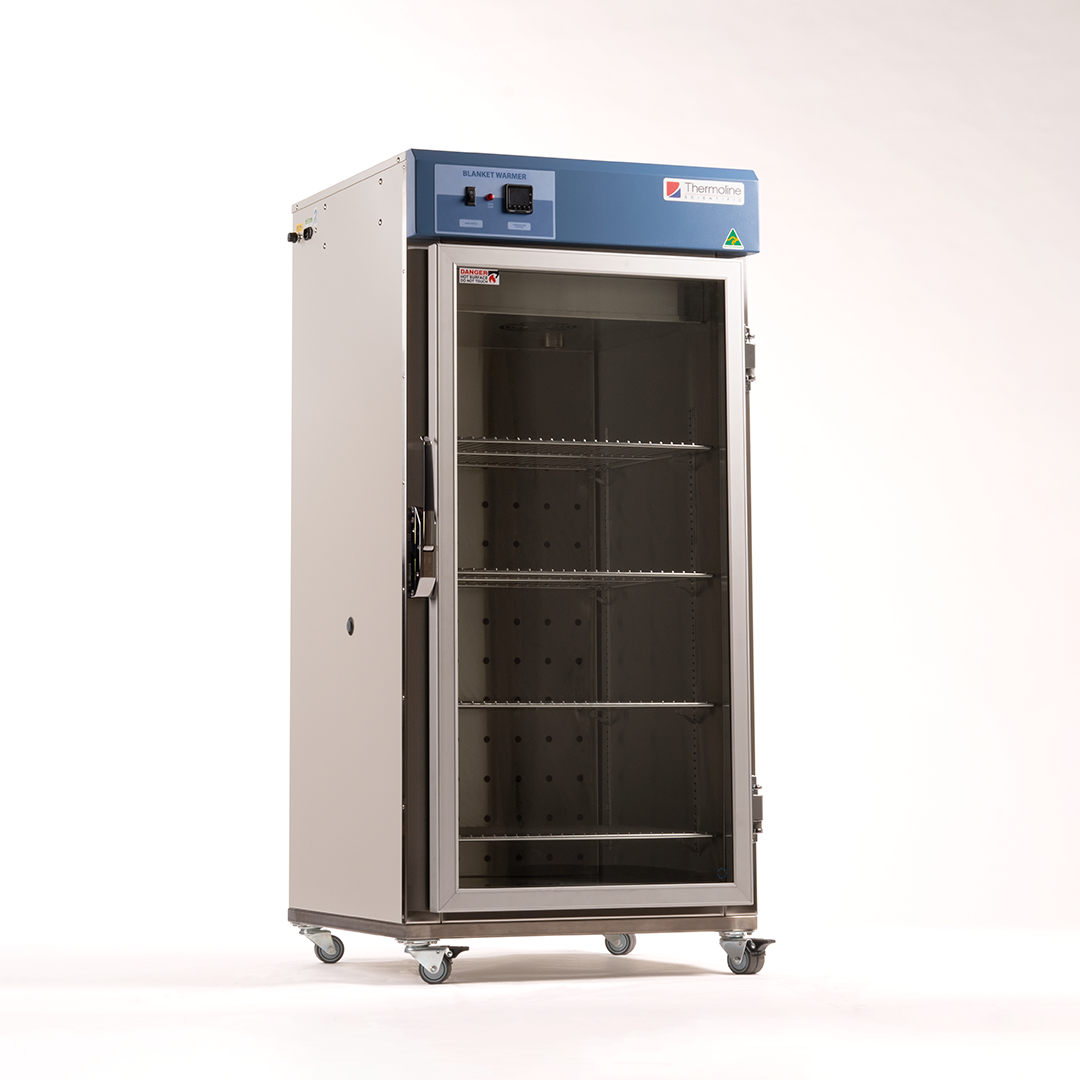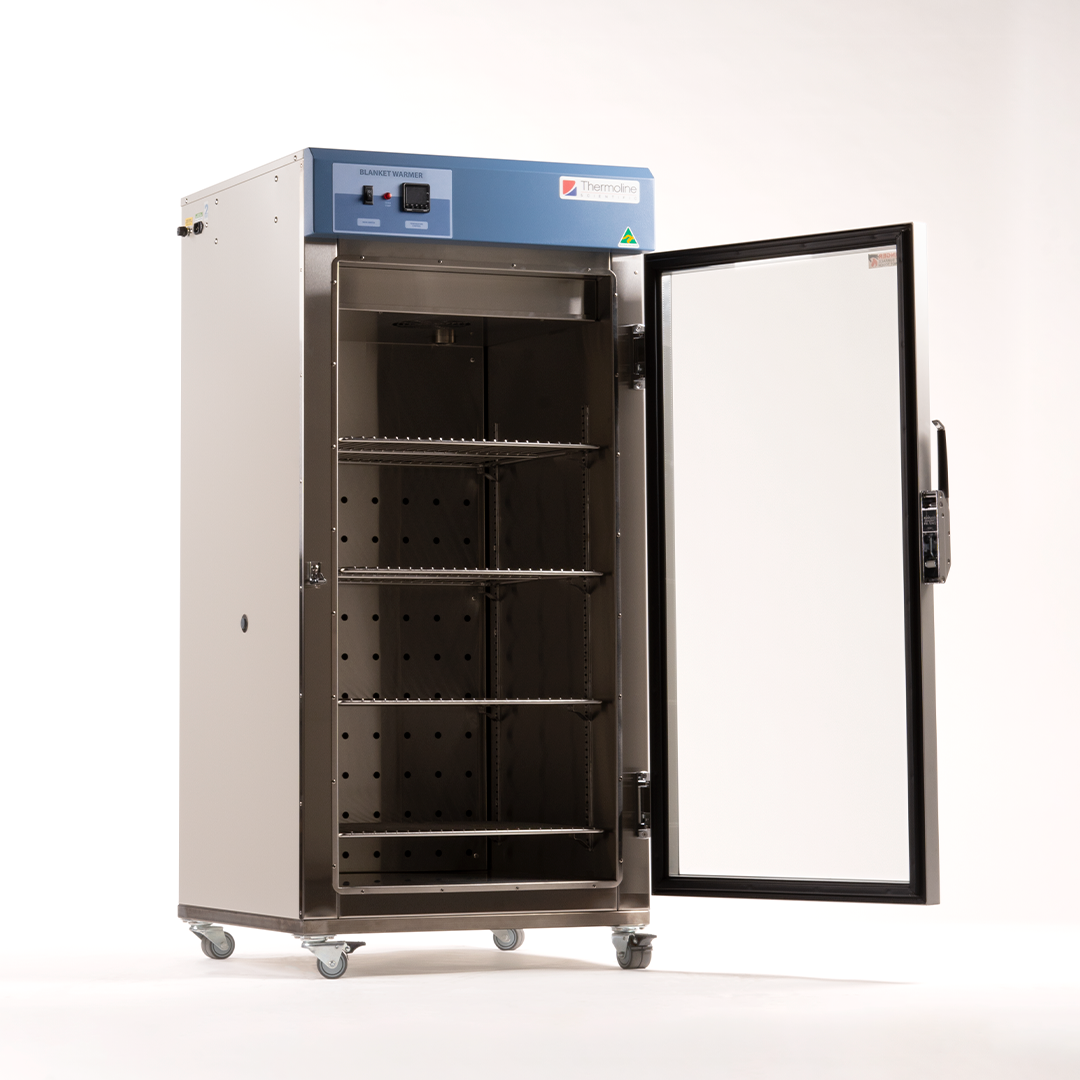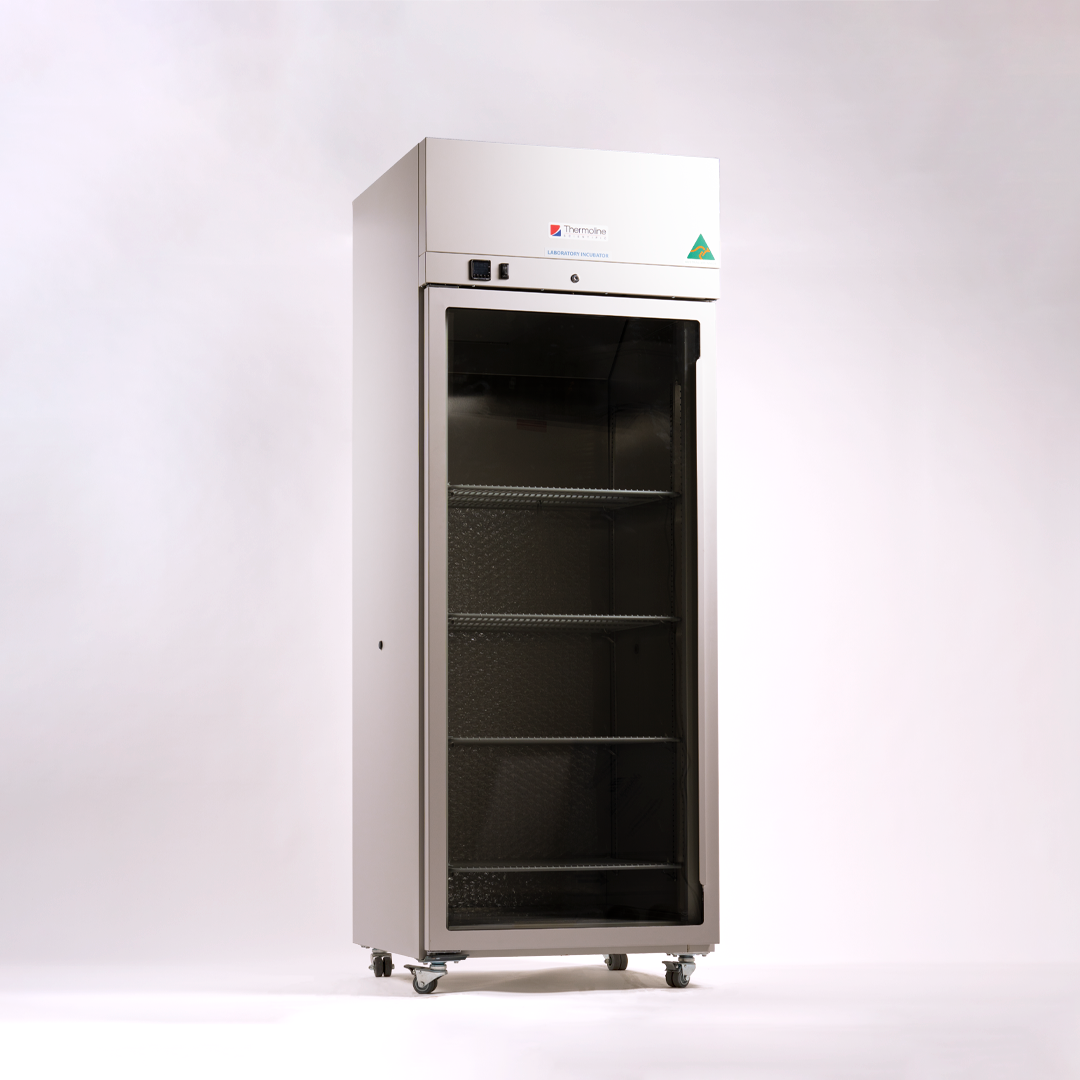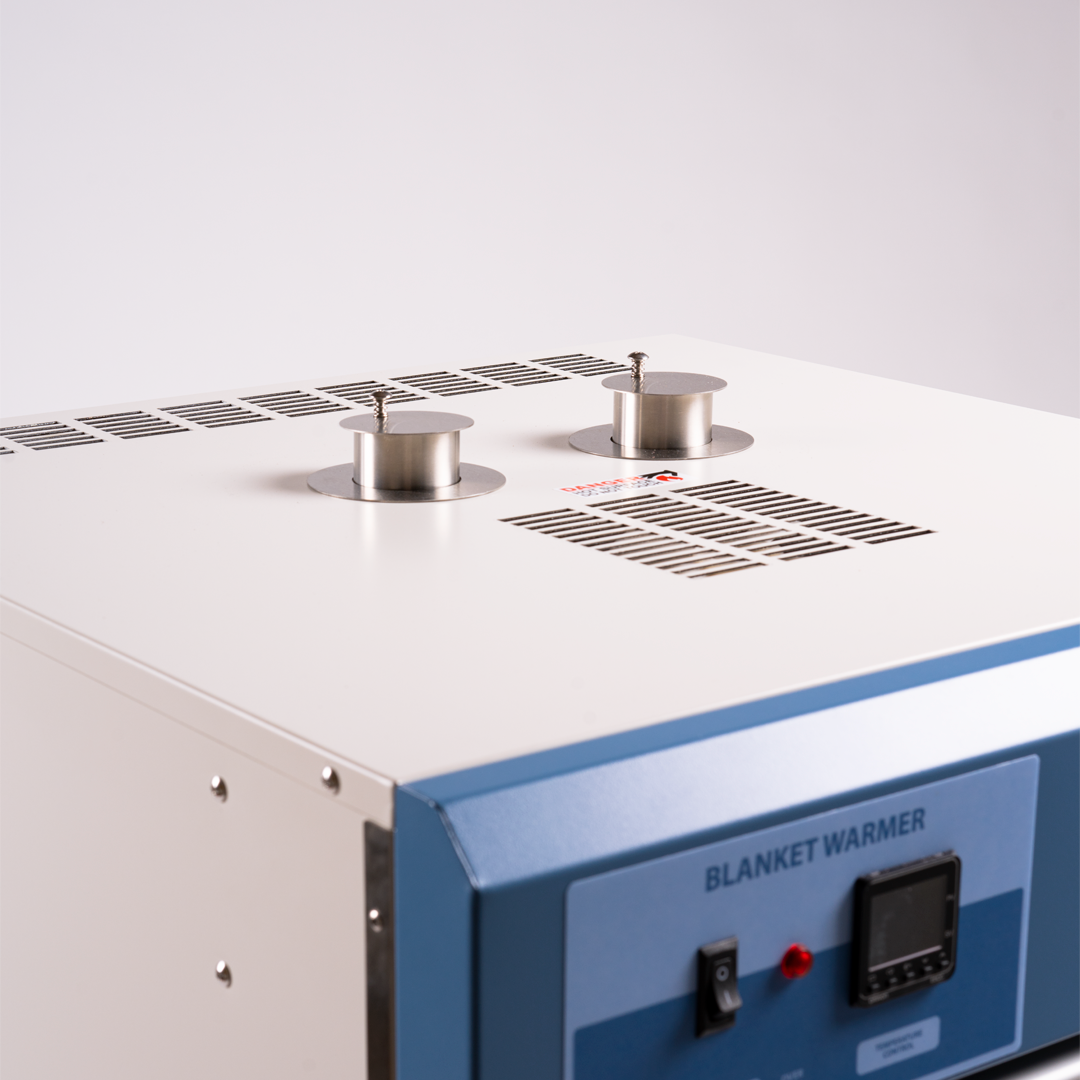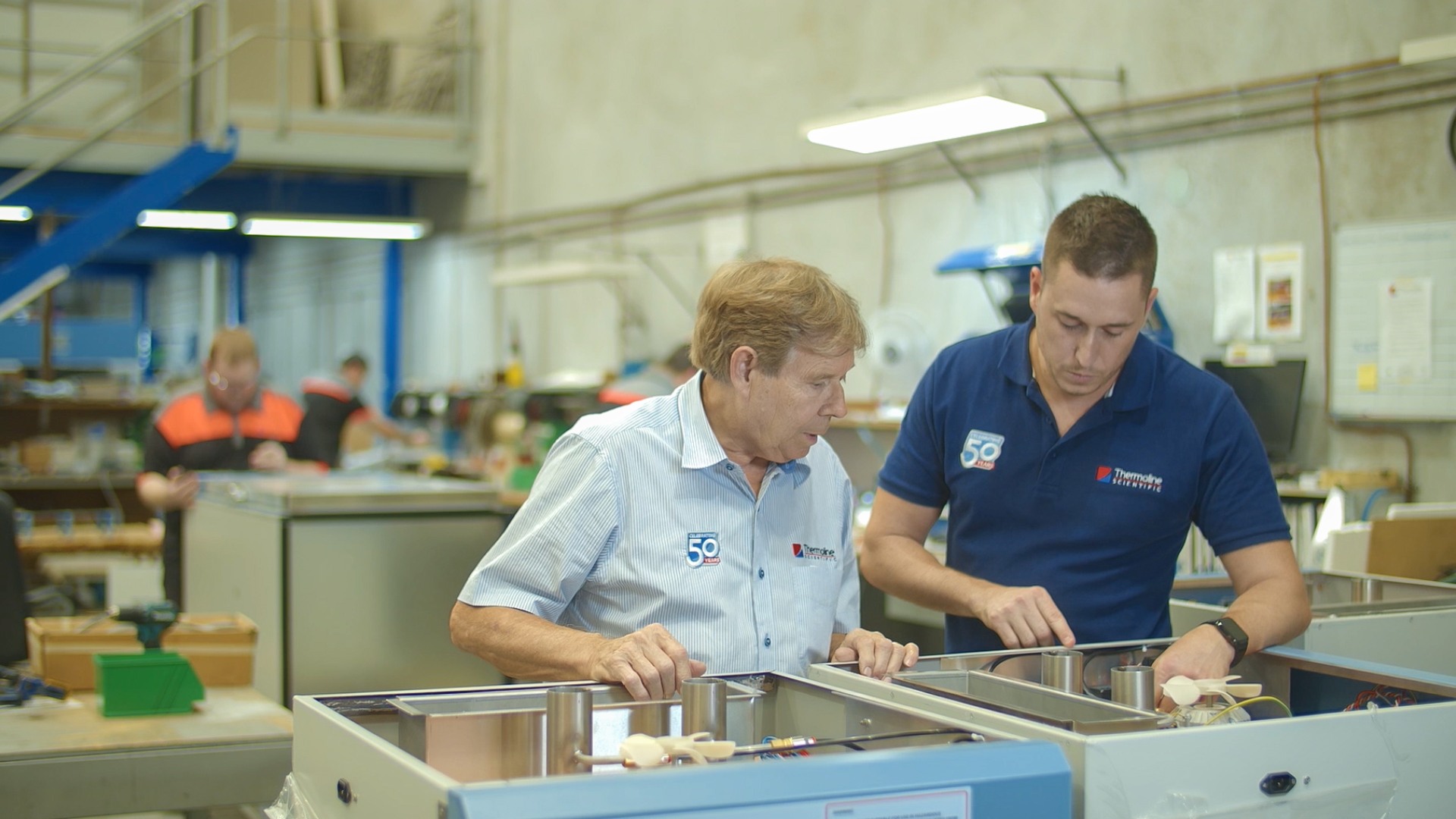Blanket Warmers TBW
Blanket warmers are designed to warm and maintain the temperature of blankets, towels, and other linen in hospitals, clinics, and other healthcare facilities. The range features internal fan-forced air circulation, adjustable shelving and self-closing, lockable doors.
All Thermoline blanket warmers come complete with a glass doors for viewing and are supplied complete with heavy duty castors to allow cabinets to be easily moved when the area around cabinet requires cleaning.
Overview
Thermoline blanket warmers are essential in hospitals for ensuring patient comfort and maintaining optimal body temperature during medical procedures. Designed to meet the rigorous demands of healthcare environments, Thermoline blanket warmers provide a reliable, consistent heat source for blankets, minimising the risk of hypothermia in patients before, during, and after surgeries.
With advanced temperature control and safety features, Thermoline’s units ensure that blankets are heated evenly, preventing overheating and ensuring patient safety. Ideal for operating rooms, recovery wards, and emergency departments, Thermoline blanket warmers offer durable performance and energy-efficient operation, making them a critical addition to any hospital's patient care equipment.
Our blanket warmers ensure the highest level of reliability and safety, providing peace of mind for healthcare professionals and comfort for patients.





Key Features:
- Precise Temperature Control: Our blanket warmers offer adjustable temperature settings from ambient +5°C to 60°C, ensuring optimal warmth for patients and critical items.
- Monitoring Porthole: Each model features a 13mm cable/monitoring porthole with a removable rubber plug, allowing for the connection of remote temperature measurement devices for added security.
- Automatic Over-Temperature Alarm: For enhanced safety, our digital temperature control includes an automatic over-temperature alarm. If the warmer exceeds the set temperature, the system emits a visual warning and shuts down the heating elements to prevent overheating.
Applications in Healthcare Settings:
1. Hospitals:
-
- Ensuring warm blankets are always available for patient comfort and care.
- To keep patients warm before, during, and after surgery, preventing hypothermia.
2. Day Surgery Centers:
-
- Providing warm blankets for pre- and post-operative patient care.
- To provide comfort and warmth as patients recover from anesthesia.
3. Maternity Wards:
-
- For keeping both newborns and mothers warm.
- To comfort patients, helping to stabilise body temperature.
Why Choose Thermoline Blanket Warmers:
- Reliability: Engineered for consistent performance, our blanket warmers are trusted by healthcare facilities to deliver reliable results day after day.
- Safety: With features like an automatic over-temperature alarm, our blanket warmers prioritise safety and operational integrity.
- Peace of Mind: The ability to monitor temperatures remotely and receive real-time alerts ensures that you can focus on patient care without worrying about equipment performance.
Thermoline Blanket Warmers are an essential addition to any healthcare facility, offering the perfect blend of reliability, safety, and efficiency. Trust Thermoline to provide the highest quality warming solutions for your hospital, day surgery centre, or aged care facility.
Specifications
- Dimensions
-
TBW-250F-1-GD TBW-520F-1-GD External WxDxH (mm) 630x650x1360 740x840x2010 Internal WxDxH (mm) 500x510x950 590x530x1430 Clearance Front (mm) 630 740 Back (mm) 100 Sides (mm) 100 - Technical Specification
-
TBW-250F-1-GD TBW-520F-1-GD Temperature Range Ambient +5°C to +60°C Temperature Control Stability +/- 0.1°C Temperature Uniformity +/- 1.0°C Nominal Capacity 250L 520L Porthole Diameter 13mm Weight 120kg 150kg Electrical 1500W/230V 450W/230V - Features
-
TBW-250F-1-GD TBW-520F-1-GD Shelves (max @100mm spacing) 3 (max 6) 4 (max 11) Castors ✔ ✔ Fan Forced Air Circulation ✔ ✔ Omron E5CC-T Controller ✔ ✔ Door Locks ✔ ✔ Insulation Fibreglass Ecofoam - Safety
-
TBW-250F-1-GD TBW-520F-1-GD Over Current Protection ✔ ✔ Over Temperature Safety ✔ ✔ - Options
-
TBW-250F-1-GD TBW-520F-1-GD Additional Shelves Additional Stainless Steel shelves to suit BMS Plug No volt contact closure plug and socket connection to a Building Management System Customisable Port Hole Add additional 13mm port holes or choose 50mm port holes Stainless Steel Interior and
ExteriorCabinets can be manufactured with stainless steel interior and exterior finishes
Downloads
Support & FAQs
At Thermoline, we strive to supply helpful customer support to ensure that you get the most out of our products. We are committed to providing whatever support our customers need, wherever they are in the world. If you can't find your solution in the below FAQs or Knowledge Base, please contact our friendly support team.
- What is a blanket warmer used for?
A hospital blanket warmer is a device used in medical settings to keep blankets, towels, and other linens warm. It typically consists of a cabinet with shelves or hooks to hold the linens and a heating element to warm them. The cabinet is designed to maintain a consistent temperature to keep the linens warm and comfortable for use on patients.
Blanket warmers are commonly used in hospitals, clinics, and other medical facilities to improve patient comfort, reduce the risk of hypothermia, and promote healing. They are also used in operating rooms to keep linens warm and ready for use during surgical procedures.
- Why are blanket warmers important?
Blanket warmers are important for several reasons:
-
Patient comfort: Blanket warmers provide a warm and comfortable environment for patients, especially in cold medical facilities. This helps to improve patient satisfaction and well-being, which can have a positive impact on the healing process.
-
Hypothermia prevention: Hypothermia, a condition where the body loses heat faster than it can produce heat, can be a serious problem in medical settings. By providing warm linens, blanket warmers help to prevent hypothermia in patients, especially those who are elderly, ill, or undergoing surgery.
-
Improved surgical outcomes: In operating rooms, blanket warmers help to keep linens warm and ready for use during surgical procedures. This helps to reduce the risk of surgical site infections, which can be caused by using cold linens on patients.
-
Convenience: Blanket warmers provide a convenient way for medical staff to access warm linens quickly and easily. This helps to improve the efficiency of patient care and reduce the time required for staff to locate and warm linens.
-
- What temperature should a blanket warmer be set at?
The ideal temperature for keeping blankets in a hospital blanket warmer varies depending on the specific requirements of the medical facility. However, the recommended temperature range for most blanket warmers is between 32°C and 55°C. It is important to note that the temperature should be carefully monitored and regulated to ensure that the blankets are warm, but not too hot, as excessive heat can cause discomfort and increase the risk of burns.
It is also recommended to follow any specific guidelines or regulations set by the medical facility or governing bodies regarding the storage and use of linens in a hospital setting.

